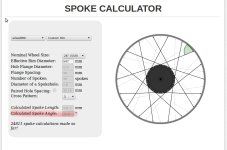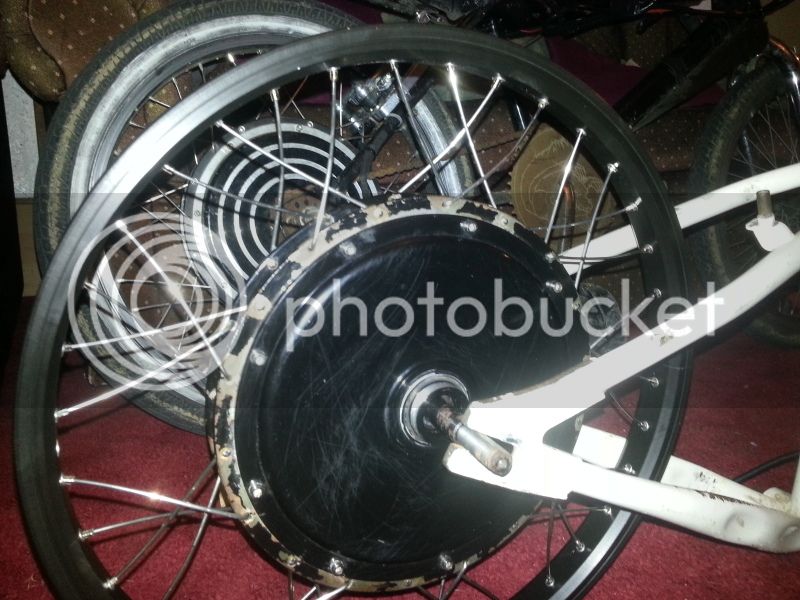bowlofsalad
100 kW
Hello,
http://www.ebikes.ca/tools/spoke-calc.html With the release of this excellent tool, I've been doing a lot of comparison on various hub diameters and the spoke angles they create with all the cross patterns. The general notion that I gather is that more crosses are better, I don't really know for certain, but I am certain that less spoke angle is better. Anyway, what I am wondering is, what spoke angle might be considered a limit? I imagine this differs from hub to hub as an ebike hub weighs much more than a typical bicycle hub, maybe there isn't a strict answer but more of a vague guideline dependent on the weight of the hub.
What are some things that can be done to aid the nipple seating with various undesirable spoke angles? I've seen sapim polyax (http://www.sapim.be/nipples/brass/polyax) nipples, I've read stuff about things like drilling the holes at an angle and maybe something more that slips my mind, maybe it was washers, maybe it was oddly shaped rim spoke holes.
http://www.ebikes.ca/tools/spoke-calc.html With the release of this excellent tool, I've been doing a lot of comparison on various hub diameters and the spoke angles they create with all the cross patterns. The general notion that I gather is that more crosses are better, I don't really know for certain, but I am certain that less spoke angle is better. Anyway, what I am wondering is, what spoke angle might be considered a limit? I imagine this differs from hub to hub as an ebike hub weighs much more than a typical bicycle hub, maybe there isn't a strict answer but more of a vague guideline dependent on the weight of the hub.
What are some things that can be done to aid the nipple seating with various undesirable spoke angles? I've seen sapim polyax (http://www.sapim.be/nipples/brass/polyax) nipples, I've read stuff about things like drilling the holes at an angle and maybe something more that slips my mind, maybe it was washers, maybe it was oddly shaped rim spoke holes.




